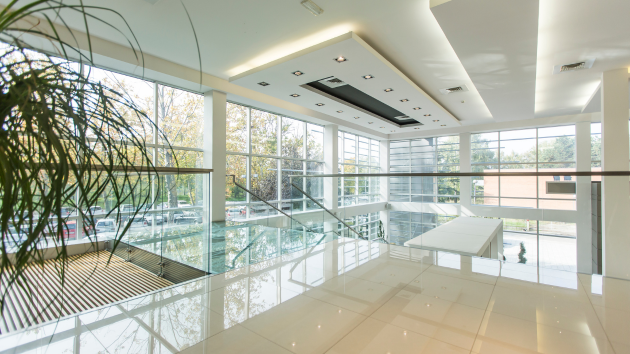There is no doubt that window film can improve the energy efficiency of both residential and commercial buildings. Here’s more information and a few FAQs about window film types and installation.
What Is the Function of Window Film?
Let’s begin by looking at the function of window film and how it contributes to energy efficiency. Installation of solar film on glass surfaces either reflects or absorbs solar energy. It reduces the amount of heat that enters the room from the outside. Window films come in a variety of varieties, each with its own set of benefits for the glass they cover. Additionally, different shades have varying levels of performance.
Solar Window Film Types
To begin, what options do you have in terms of window film? A solar film can be categorized into one of three categories:
1. Spectrally Selective Metalized Ceramic
There are a wide range of films to choose from within each of those three categories, but knowing what to expect helps us know what to look for and what to expect next.
2. Metallic Window Film
Heat can be reduced by reflecting solar energy and light away from windows by using metalized window film. Silver or bronze in color, these films offer high performance at a low price.
3. Ceramic Window Film
Metalized window films have a lower level of clarity than ceramic films. Because they use ceramic technology, which absorbs heat instead of reflecting it, the interior and exterior reflection are reduced while the performance is maintained at a high level.
Heat absorption and reflectance can be improved by using spectrally selective films that use a variety of technologies to absorb and reflect heat. You get a brighter room with better heat rejection and no reflection because they only let certain wavelengths of light through.

What is the Window Film Installation Like?
A film’s installation procedure is the same for all three of these categories. Films can be installed on windows at any time of the day or night—during the day, after hours, or on weekends. Having the ability to customize the installation of window film is a huge advantage.
The installation of window film doesn’t make a lot of noise, but it does sound like paper being crumpled and spray bottles are being sprayed. For these reasons, it is simpler to complete larger projects after-hours, when we do not have to work around tenants, disrupt daily operations, or shut down any areas for long periods of time.
Window film’s ease of installation and adaptability are two additional advantages for commercial businesses. Window film requires only a few hours of downtime compared to a full glass replacement, so you’ll be able to get back to work sooner.
Install window film on the south side of the building this week to address tenant complaints about heat and glare. When the east and west sides start to have heat and glare issues, you can then install window film on those sides next week, next month, next year, or whenever. Although only one side of the building will have window film installed, it still provides heat and glare reduction benefits.
Performance of Window Film
Tenants and employees will immediately see and feel the benefits of your window film installation. Glare and heat will be reduced because of the window film’s ability to reject heat and energy that enters through the glass. You won’t have to deal with the heat radiating through the glass or the sun’s direct rays all day long. There won’t be any annoying glare in your eyes from other people’s windows or cars outside, so you’ll be more comfortable and more productive as a result.
Window Film for Energy Efficiency: What to Expect
We just discussed how solar film can help tenants and other occupants feel more at ease by reducing heat and glare. With window film, building managers will also see a reduction in energy consumption and utility costs in the near future. Within the first month of the window film installation, energy costs should be reduced. You should notice a significant decrease in your A/C’s usage over the next several months.
We get a lot of questions about whether or not it makes sense to replace old windows with new, more efficient ones. That’s an option, but it can be a lot more expensive than simply applying window film to the windows. In fact, installing window film costs about one-fourth as much as replacing the glass would normally do so. Because of this, you can expect to get a better return on investment by using window film rather than replacing the glass panel wall.
How much money will window film save you, and how long will it hold up?
Though we wish we could give you a definitive answer, there are a number of variables that affect how much money you can save by installing window film:
- Your building
- Existing window glass
- Your existing glass’s energy efficiency
- What kind of film you choose
- A window film’s longevity also depends on the climate, environment and type of film it’s made out of







